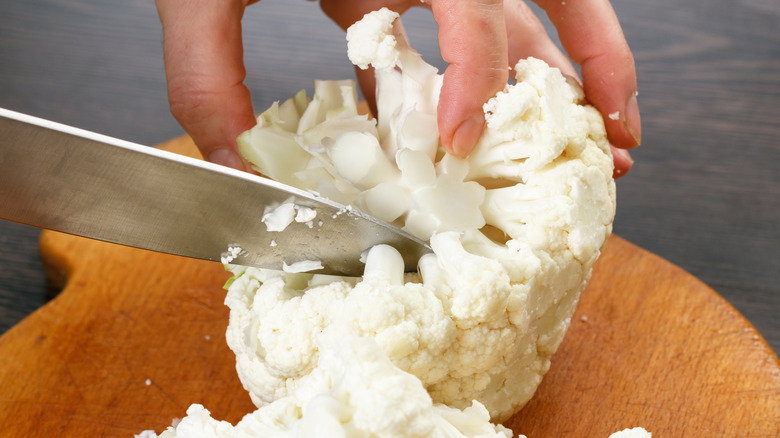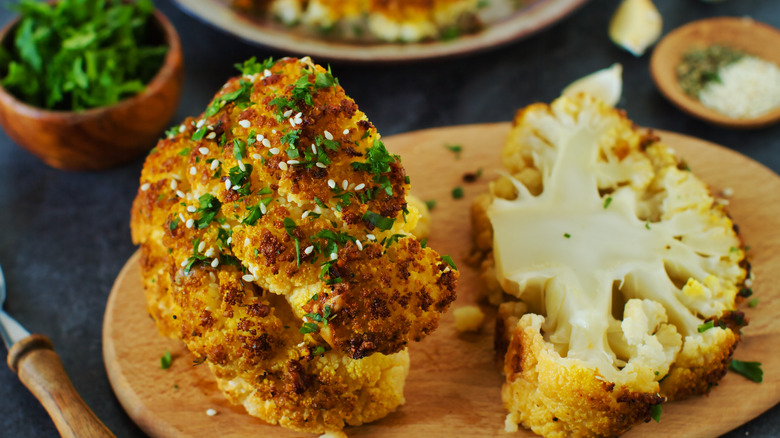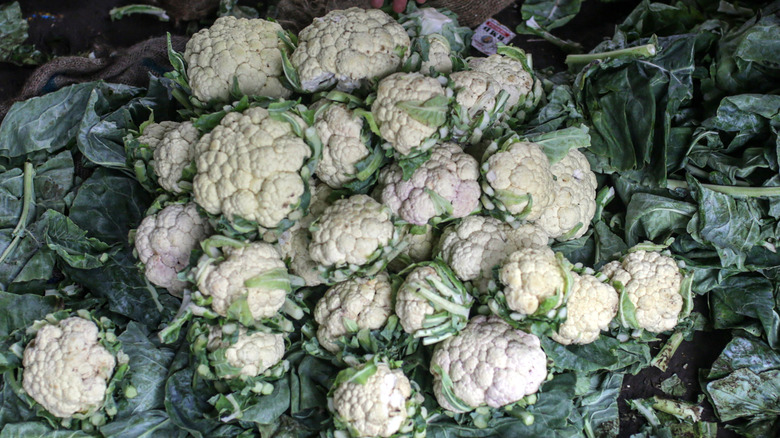Should You Use Or Discard Cauliflower Cores?
The humble cauliflower is a quintessential ingredient in some of the most beloved dishes worldwide, from the iconic British side of cauliflower cheese to the deliciously aromatic aloo gobi from India. Even pulsing it in a blender to achieve the consistency of rice has gained popularity in recent years. However, a lingering question you might have when faced with this cloud-like vegetable is whether the core should be eaten or thrown away.
The cauliflower's core is entirely edible and can be consumed raw or cooked. It can easily be retrieved by chopping the florets away from the middle. Not to mention, it's a fantastic source of nutrients and can be enjoyed in just as many delicious ways as the florets.
It's also a remarkable way to reduce food waste. According to Feed America, the United States wastes 80 million tons of food yearly, which is equivalent to 149 billion meals. This food waste can end up in a landfill, inevitably contributing to methane emissions and, consequently, climate change and environmental degradation. While throwing out a cauliflower core may seem small, using it is an impactful way to decrease food wastage. Now, let's get to the core of it.
What does it taste like and how can you use it
Just like a broccoli core, the center of a cauliflower is tough compared to the florets. If a stem is attached to the core, it's best to peel the thicker skinner surrounding it first which can be chewy — you want to get to the slightly softer core beneath. The peels can be saved and used for vegetable stock if you're seeking zero-waste methods. If consuming the core raw, you can slice it into dipping sticks for a mild and slightly nutty snack. It's generally fairly crunchy, too, though this can change depending on the type of cauliflower.
In some instances, you will want to cook the core to soften it. You can choose to blitz or grate chunks of the core into cauliflower rice, which can then be sauteed with a little oil. For a zero-effort way to enjoy the core, you can make a whole roasted cauliflower recipe. Just parboil it beforehand to ensure it doesn't dry out in the oven and then roast it in a bit of oil. The cauliflower's mild flavor makes a fantastic blank canvas to garnish with other flavors, such as a trio of cheeses, a tahini dressing, or a lemony whipped feta. There's no doubt that a whole roasted cauliflower makes for an impressive centerpiece that would ultimately be nothing without its core.
A nutritious powerhouse
Cauliflower is an exceptional source of nutrition, boasting high levels of vitamins and minerals while remaining low in calories. The stems and core are no exception to this, as they are packed with iron, fiber, and calcium. A research study published in Antioxidants in 2021 has also provided evidence to suggest that the by-products of cauliflower such as the leaves and stems are high in antioxidant activity and shouldn't be discarded.
On this note, it must be underlined that the cauliflower leaves are just as edible as the rest of the plant. Instead of wasting these cauliflower parts too, the leaves can be sauteed with butter, roasted or air-fried until crispy, or boiled like cabbage leaves.
Cauliflower is a magical vegetable that can be used in its entirety to easily create tasty, exciting, and highly nutritious dishes. Hold onto the core and see what culinary doors it opens.


